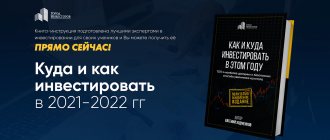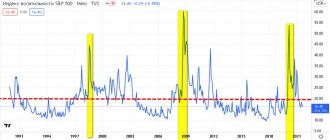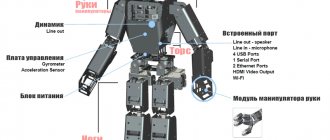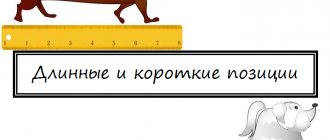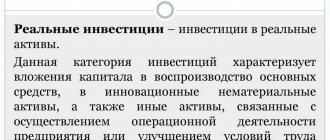Trading cryptocurrencies involves numerous risks. This is how almost every text about trading usually begins. And this is normal, because when picking up money, and even more so sending it to the stock exchange, everyone should understand that he is sending his working hours, which he could spend with friends in a bar or at home with his family.
But the fate of a trader is such that he cannot help but trade. It is, so to speak, in our blood. And it's not about passion, but about thinking. Looking at graphs, we see more than just numbers, cells and bars. We see opportunities based on a combination of patterns, news and trends.
Global market trends are such that cryptocurrencies and blockchain are increasingly being introduced not only into the economy, but also into business.
A lot of time has passed since the biggest collapse of the digital economy in 2022. Using the example of Elon Musk’s manipulations with the price of Bitcoin, we can see that the asset is becoming stronger and more reliable as a hedging instrument. The first cryptocurrency is less and less likely to twitch its knees cowardly after the release of a businessman’s next tweet, although investors sometimes still experience a nervous tremor in their fingers when receiving notifications from Twitter. Looking at the ether, we note that promising technologies (meaning the Ethereum 2.0 project) are truly valued by the investor community. These and other digital assets can be traded on the Binance cryptocurrency exchange.
The platform is considered one of the largest and most popular due to its high level of liquidity and a wide range of opportunities for participants. For example, there is a p2p exchanger where participants can sell coins to each other, spot trading, trading futures contracts and many others. Today we will focus on the difference between spot and futures.
Concepts of spot deal and spot price
Spot (spot deal, spot deal) is a transaction for the purchase and sale of assets (securities, currency, precious metals, etc.), settlements and delivery of which are carried out no later than 2 days from the date of conclusion of the spot contract.
The simplest example, not counting the example about the carrot at the beginning of the article, is the purchase of currency. Let me remind you that there are several ways for an ordinary person to purchase dollars or euros:
- come to the bank and buy the treasured banknotes,
- do the same online via mobile phone or computer,
- open a brokerage account and buy currency at the market price on the Moscow Exchange.
Essentially, all 3 methods are spot transactions. You give the seller your rubles and receive currency. In the first two cases this will happen instantly, in the third – the next day or 2 days later (depending on the type of transaction, which we’ll talk about below).
The price at which a spot transaction is concluded is called the spot price. It reflects the current situation and serves as a guide for concluding other types of transactions, for example, on the derivatives market. The terms of the transaction (type of asset, price, delivery volume, deadline - today, tomorrow or in 2 days) are fixed at the time the spot contract is concluded and do not change.
Investment educational program
The derivatives market is a part of the financial market where transactions for the purchase and sale of futures and options are concluded. The name does not symbolize the high speed of operations, but the specific deadline by which the underlying asset is delivered. In this case, at first only part of the cost (guarantee obligation) is paid, and the remaining money is paid at the time of closing the transaction. The delivery time, unlike the spot market, can be several months.
Don't confuse spot trading with swap trading. The names are consonant. But a swap is an exchange transaction with assets; the exchange period can be arbitrarily long; by agreement of the parties, the terms of the transaction can change.
More than 100 cool lessons, tests and exercises for brain development
Start developing
What applies to peddling and delivery trade?
The advantage of trading on the go is the ability to sell almost anywhere in the city where there is demand.
And very often such sellers do not need a cash register. Therefore, it is important not to confuse trade from hand with an online store, catering and trade in a non-stationary retail facility. Let's figure it out. Carry-out and delivery trade is when the seller is not tied to a place: he has no premises, no kiosk, no tent, no counter. Here are the definitions written in GOST R 51303-2013. Trade:
- Carry-out trade is selling from hand in the office, in transport, at home and on the street. The seller does not stand at the point, but looks for places with buyers. To carry goods, he uses a convenient device - a tray, basket or hand cart.
- Distribution trade is trade from a van, trailer, tanker or other vehicle. Mobile equipment, such as a refrigerator, can be attached to the vehicle.
You can trade by hand and by machine only at retail, not wholesale.
Here are examples of carry-out trading:
- walk down the street and sell balloons from your hands without a tray;
- come to offices and sell cosmetics;
- sell magazines in the train carriage.
Here are examples of delivery trade:


